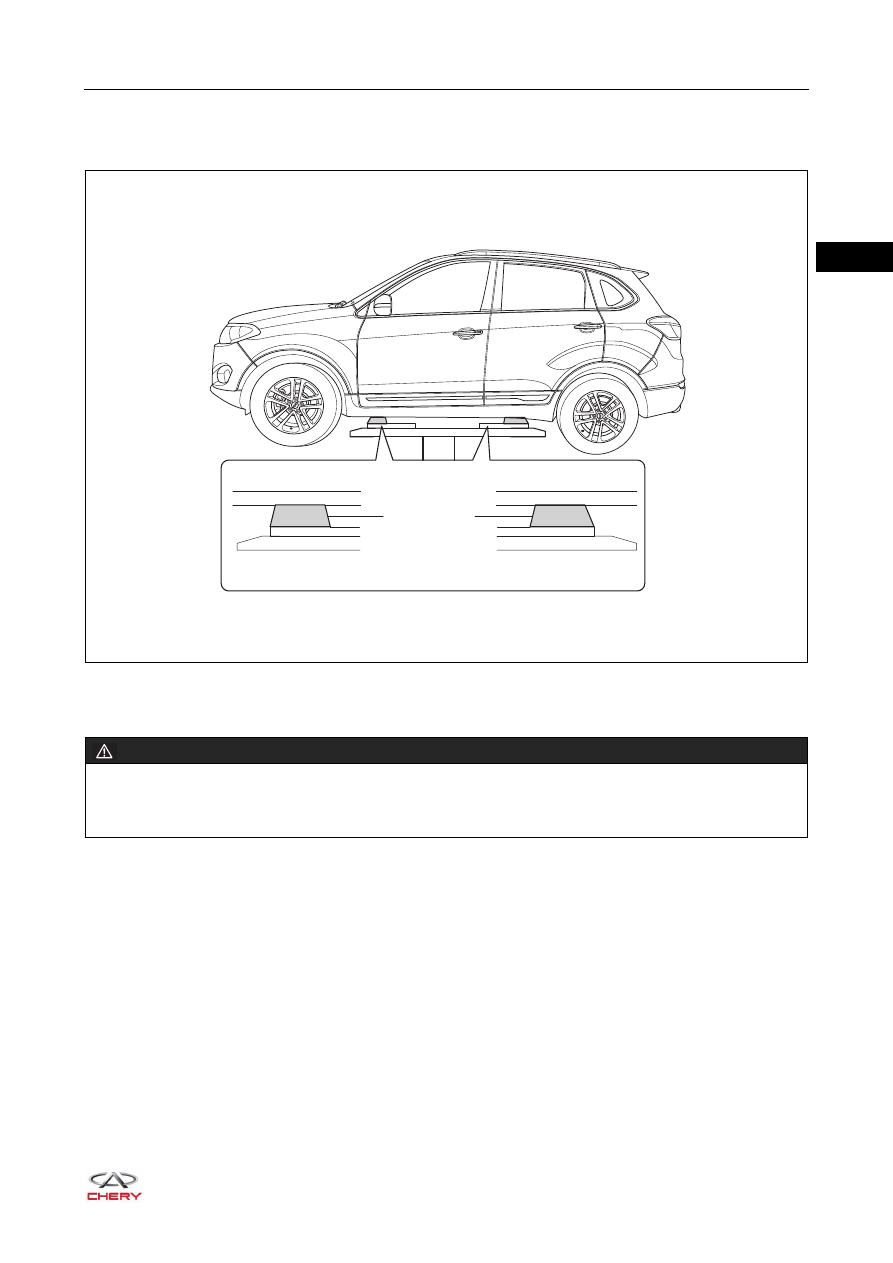Chery Tiggo 5 (T21). Manual - part 2

02–
7
02
b. Precautions for using a plate type lifter
Follow the safety procedures described in the instruction manual.
Use plate type lifter attachments (rubber lifting blocks) on the plate surface.
Service Operation
1. How to use fasteners
The reference values of fasteners and torque specifications in this service manual use metric unit.
Recycling all the fasteners (nuts, bolts, etc.) during maintenance and service operation is important for
assembly.
If it's impossible to recycle fasteners, be sure to use other fasteners with the same specifications.
RT21020030
Attachment
WARNING
Using incorrect fasteners may cause damage to components. Injury and death may occur without
observing the instructions below.